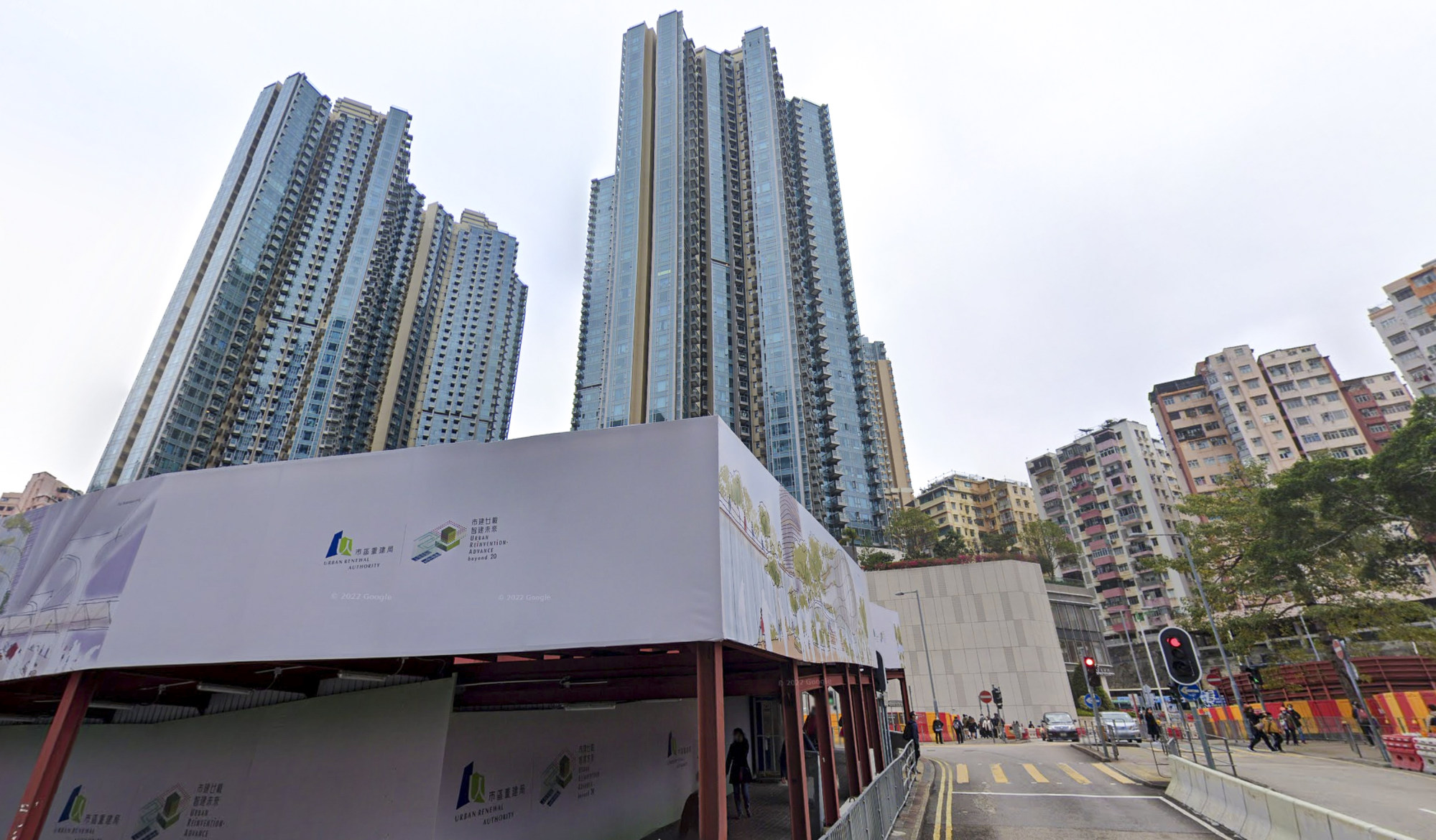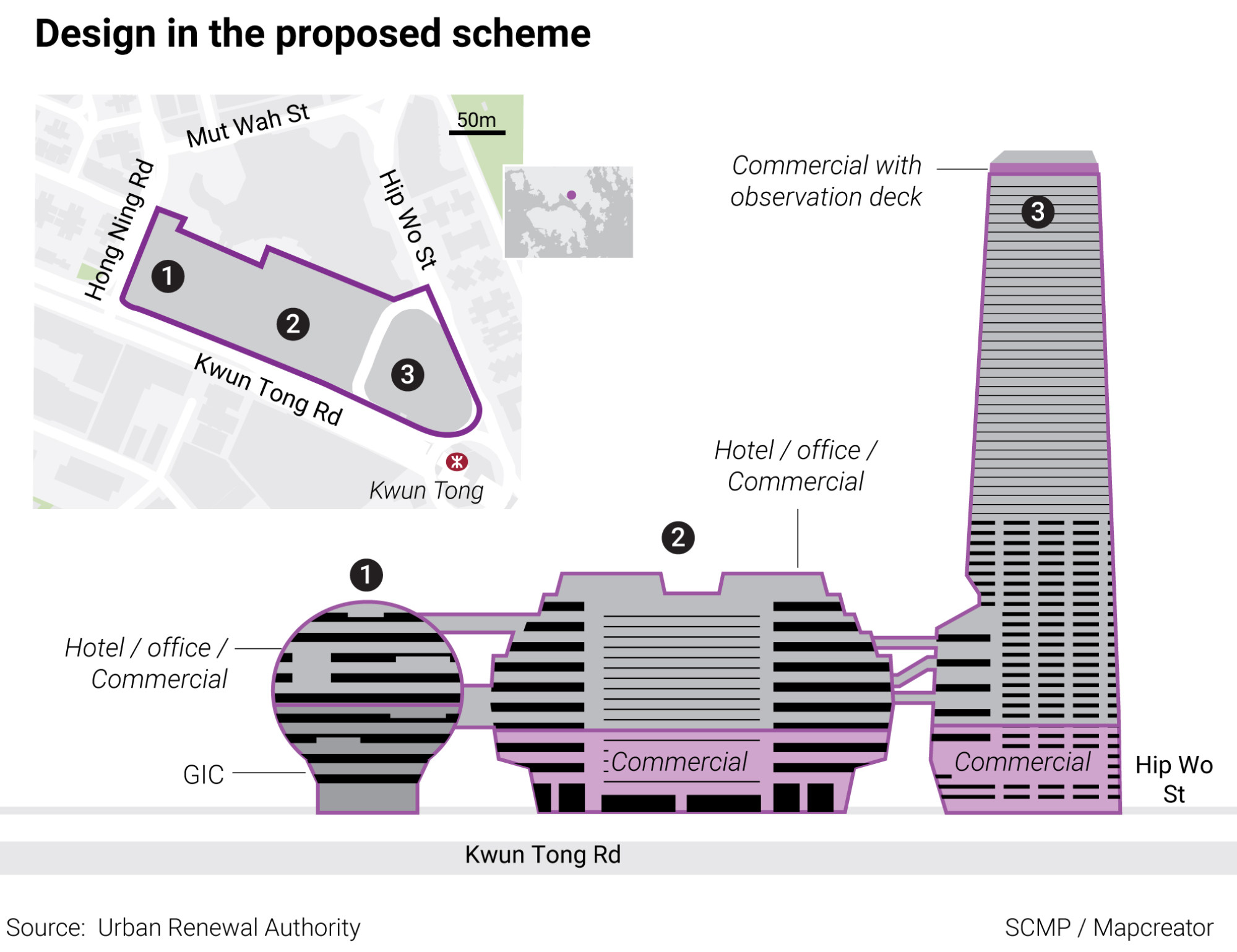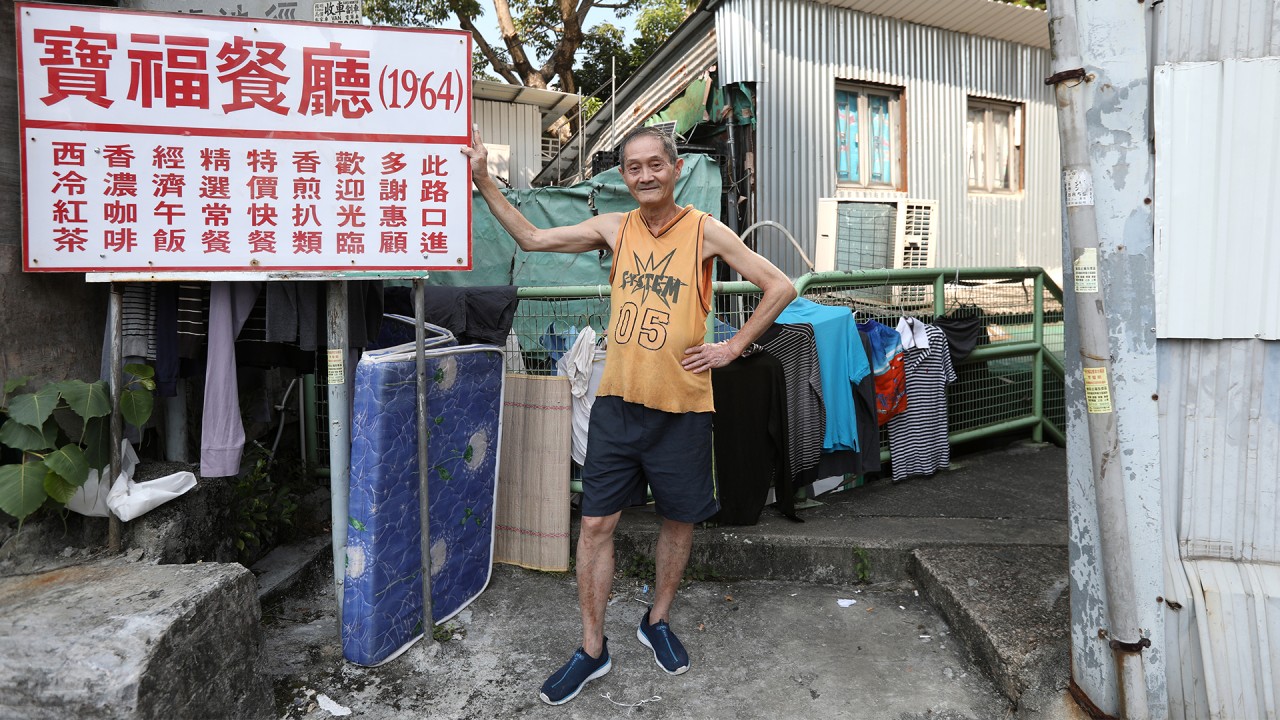
URA’s Kwun Tong town centre redevelopment tender likely to draw muted response amid bleak economic outlook, analysts say
- Only three to four bids can be expected from top developers because of the ‘large and long-term investment’, says Alex Leung of CHFT Advisory
- Market observers expect the site to fetch between HK$18 billion and HK$20 billion, compared with earlier estimates of as much as HK$26 billion
The upcoming tender for the last phase of Kwun Tong town centre’s mega redevelopment will test the market’s resilience amid a weakening economy and high office vacancy rates in the area, market observers say.
Following the withdrawal of tenders for three commercial sites in the nearby Kai Tak Development area in 2019 and 2020, property consultants said they do not expect the Kwun Tong tender to draw many bids.
Only three to four bids can be expected from top developers because of the “large and long-term investment”, said Alex Leung, senior director at CHFT Advisory and Appraisal. “The market is no longer normal since the outbreak of Covid-19.”

Last week, the URA asked developers and consortiums to formally show their interest in undertaking the Kwun Tong Town Centre Development Areas 4 and 5 Project. The deadline for submitting expressions of interest is September 7.
The current project covers an area of 25,595 square metres (275,502 sq ft). Upon completion, it will provide a maximum total gross floor area of 201,220 square metres.
The development proposal includes an egg-shaped building, a 60-storey commercial tower and a smaller building, according to the URA’s application to the Town Planning Board in July. The project will also include community facilities and a large open space.

Leung said he expects Sun Hung Kai Properties (SHKP), which owns the APM shopping centre in Kwun Tong, and CK Asset Holdings to go it alone, while Henderson Land Development could be part of a consortium.
SHKP and Henderson declined to comment. CK Asset and Sino Land did not reply to requests for comment.
Sino Land was involved in the previous phases of the redevelopment, which included the Park Metropolitan residential project completed in 2014 and the Grand Central project in 2020.
Leung cut his valuation for the site by nearly 20 per cent to HK$20 billion (US$2.5 billion), or HK$9,500 per square foot, saying “developers are conservative at the moment”. He previously estimated the plot to fetch between HK$22.7 billion and HK$26 billion.
The outlook for the Hong Kong’s economy does not look too bright. Last week, the government revised its full-year growth forecast from 1 to 2 per cent growth to between 0.5 per cent growth and 0.5 per cent contraction amid a worsening external trade environment. The revised estimates came after the gross domestic product shrank by 1.3 per cent year on year in the second quarter and 3.9 per cent in the first quarter.
Relocation deals slammed by businesses in Hong Kong district’s regeneration
Vincent Cheung, managing director of Vincorn Consulting and Appraisal, said “only the top-notch local developers would consider such a huge commercial project”.
The current vacancy rate of commercial buildings in East Kowloon, at 14 to 15 per cent, is the highest in Hong Kong, said Cheung. More projects are still to be launched, he added.
Cheung estimates the site to fetch HK$8,500 per square foot, which translates to HK$18.4 billion.
The URA has initiated a pilot arrangement of “floating planning parameters” for the tender, taking “into consideration the uncertainties brought by the ongoing pandemic and the latest market circumstances”.
Under the arrangement, the total gross floor area will remain unchanged, while giving flexibility to the successful developer or consortium to determine the actual gross floor area within specified ranges for offices, hotels and other commercial uses for the commercial portion.
Another stipulation calls for a minimum of 65,000 square metres of commercial gross floor area to be sited at lower levels of the development to maintain its character of a “town centre”. The project is tentatively slated for completion in phases from 2028 to 2032.
Vincorn’s Cheung said the URA introduced the floating parameter arrangement as it expects the project to carry certain risks given the backdrop of rising interest rates. The weakening economy is an added concern.
“The changes are due to the uncertainty surrounding the hotel and retail sectors. That is [why] the URA is leaving it to the developer whether to include a hotel in the new development,” said Leung. “Similarly, the developer could also decide to reduce the floor area allocated to the retail portion and [include] more office space.”


